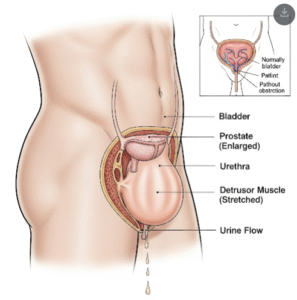Overview
Iron infusion is a medical treatment used to deliver iron directly into the bloodstream for patients who cannot absorb enough iron through oral supplements or who have severe iron deficiency anemia. This procedure ensures rapid replenishment of iron stores, improving energy levels, hemoglobin production, and overall health.
South Korea is recognized for state-of-the-art infusion therapy centers, expert hematologists, and advanced monitoring equipment, making it a preferred destination for patients seeking safe, efficient, and effective iron supplementation.
What is Iron Infusion?
Iron infusion involves:
- Intravenous administration of iron using a vein, typically in the arm
- Direct delivery to the bloodstream, bypassing the digestive system
- Rapid restoration of iron levels for patients with significant deficiency
Indications include:
- Severe iron deficiency anemia not responsive to oral iron
- Chronic kidney disease patients undergoing dialysis
- Inflammatory bowel disease with poor iron absorption
- Pregnant women with iron deficiency not improving with oral supplements
- Patients scheduled for surgery with anemia to optimize hemoglobin
What are the Benefits?
- Rapid correction of iron deficiency → Improvement in hemoglobin and ferritin levels
- Enhanced energy and reduced fatigue → Helps restore daily function and quality of life
- Bypasses gastrointestinal side effects → Avoids nausea, constipation, or stomach upset from oral iron
- Customizable dosing → Infusion tailored to individual iron requirements
- Safe and effective in chronic illnesses → Particularly for patients with malabsorption or ongoing blood loss
- Expert care in Korea → Monitored by trained hematologists and nurses
Procedure Details
1) How should I prepare for Iron Infusion?
- Pre-infusion evaluation → Blood tests (hemoglobin, ferritin, iron studies)
- Medical history review → Allergies, previous reactions to iron, and chronic conditions
- Medication guidance → Continue usual medications unless instructed otherwise
- Hydration → Drink water before infusion to facilitate vein access
- Pre-procedure consultation → Discuss iron dose, infusion duration, potential side effects, and post-infusion care
2) What happens during the infusion?
- Patient positioning → Seated or lying comfortably in an infusion chair
- IV access → Small cannula inserted into a vein, usually in the arm
- Infusion steps →
- Iron solution administered slowly via IV over 15–60 minutes depending on preparation
- Nurse monitors for allergic reactions or side effects
- Vital signs checked periodically during the infusion
- Monitoring → Continuous observation for any immediate reactions such as itching, rash, or dizziness
3) What happens after Iron Infusion?
- Immediate post-infusion care → Observation for 15–30 minutes for delayed reactions
- Side effect management → Mild headache, temporary metallic taste, or minor nausea may occur
- Activity → Normal activities can usually resume immediately
- Follow-up visits → Blood tests to monitor hemoglobin and ferritin; additional infusions scheduled if necessary
- Hydration and nutrition → Continue iron-rich diet to support recovery
Risks / Benefits
Risks
- ➤ Mild allergic reactions (rash, itching, or flushing)
- ➤ Rare severe allergic reaction (anaphylaxis, very rare with modern formulations)
- ➤ Temporary dizziness or headache
- ➤ Injection site reactions (pain, swelling, or bruising)
- ➤ Metallic taste or mild nausea
Benefits
- ➤ Rapid replenishment of iron stores and correction of anemia
- ➤ Improved energy, cognitive function, and physical performance
- ➤ Avoids gastrointestinal side effects of oral iron
- ➤ Safe and effective for patients with malabsorption or chronic conditions
- ➤ Expert monitoring and tailored dosing in Korea
Recovery and Outlook
- Immediate recovery → Usually mild, transient symptoms if any
- Short-term follow-up → Blood tests 2–4 weeks after infusion to assess response
- Return to normal activity → Most patients resume routine activities immediately
- Long-term outlook → Improved hemoglobin, energy levels, and overall quality of life
- Post-procedure care → Maintain balanced diet, iron-rich foods, and follow-up labs
- Integration with other treatments → May be combined with oral iron or treatment of underlying causes
South Korea provides comprehensive infusion care, monitoring, and hematology expertise to ensure safe, effective, and comfortable iron replacement therapy.
When To Call the Doctor
Contact your healthcare provider immediately if you notice:
- ⚠️ Severe allergic reactions (difficulty breathing, swelling of face or throat)
- ⚠️ Persistent or worsening dizziness, fainting, or chest pain
- ⚠️ Fever or infection at IV site
- ⚠️ Unusual or severe headache
- ⚠️ Any other unexpected reactions during or after infusion
Best Korea Option / Process
South Korea is a leading destination for iron infusion therapy due to:
- Expert hematologists and infusion nurses
- State-of-the-art infusion centers
- Carefully monitored, safe administration of iron
- Tailored dosing to individual patient needs
- International patient support → Consultation, translation, scheduling, and follow-up
Top Hospitals for Iron Infusion in Korea:
- Asan Medical Center, Seoul – Advanced hematology and infusion therapy
- Samsung Medical Center – Expert monitoring and chronic disease management
- Seoul National University Hospital (SNUH) – Comprehensive hematology services
- Yonsei Severance Hospital – Multidisciplinary care for anemia and iron deficiency
👉 For patients with iron deficiency anemia or malabsorption, iron infusion in Korea offers a safe, effective, and rapidly acting solution under expert supervision.













